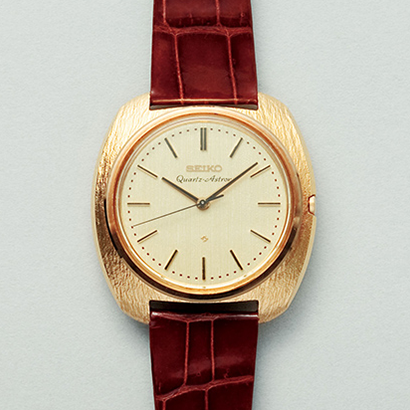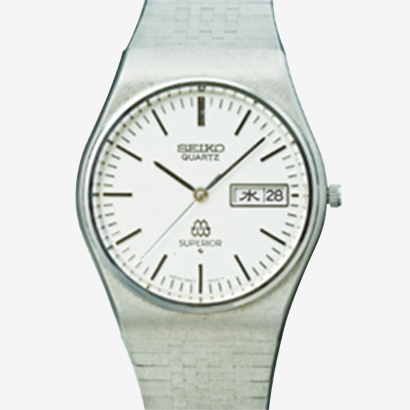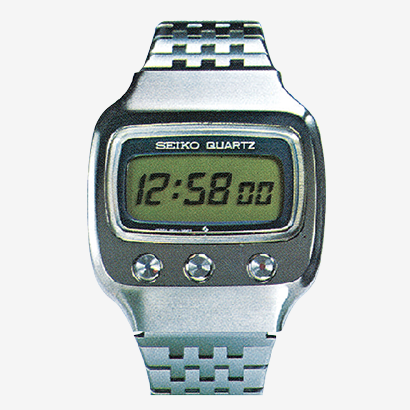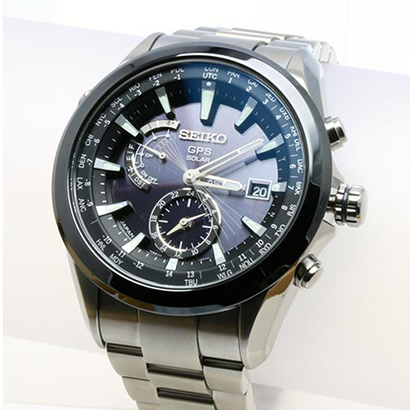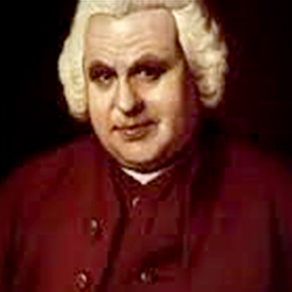The discovery of accurate and stable periodic phenomena has enabled us to increase the precision of timepieces. Even more precise than quartz timepieces, which are based on the vibration frequency of a quartz crystal, we now have atomic clocks, which are based on atomic frequency. The atomic clock has greatly influenced even the international definition of the second; but just what is this thing we call an atomic clock?
What is an atomic clock?
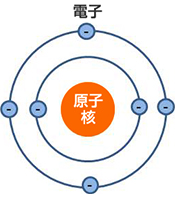
An atom consists of an atomic nucleus and electrons orbiting around it. Quantum mechanics have clearly shown that various types of atoms have different states of energy according to differences in the orbits and magnetic forces of their electrons.
When an atom changes to a different state of energy, it absorbs or emits electrical waves and light at specific frequencies. An atomic clock uses these frequencies of electrical waves and light as a standard for keeping time, like the oscillation of a pendulum or a balance.
The history of the atomic clock
The mechanism of the atomic clock was conceived of by Dr. Isidor Isaac Rabi in 1945. Four years later, the world’s first atomic clock was developed in the United States in 1949, using ammonia molecules; however, its precision was below that of a quartz clock from that time, and so it merely served to demonstrate the principle of atomic timekeeping with an actual operating device.
In 1955, the first high-precision atomic clock—the cesium-133 atomic clock—was developed at the National Physical Laboratory (NPL) in the UK and put into practical use. Among the various isotopes of cesium atoms, cesium-133 is the only isotope that does not emit radioactive rays and that exists in a stable state in nature.
“10 to the power of negative X” is often used as a unit to indicate the precision of an atomic clock. The atomic clock developed in 1955 had a precision of 10-10. This is equivalent to an error of 1 second in 300 years.
In 1967, the cesium-133 atomic clock became the standard for defining the second in the International System of Units. Until then, the length of a second had been defined from an astronomical perspective, based on the rotation and revolution of the earth, but because it is known that there are variations in the motions of the earth, the length of a second was redefined as the duration of 9,192,631,770 periods of radiation of a cesium-133 atom.
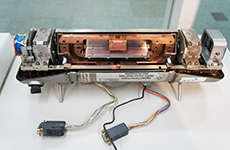
Various mechanisms are employed for atomic clocks. Each uses the optimal type of atom for its own mechanism, and some use multiple types of atom.
For the atomic clocks of today, many elements from Group 1 of the periodic table, such as cesium, rubidium, and hydrogen, are used. There are two systems of use: the passive type and the active type.
①Passive type
This system identifies the frequency of atoms that resonate when electromagnetic waves of various frequencies are applied to them. Most current atomic clocks employ this system.
・ Atomic beam standard: The atomic beam standard is used for the cesium-133 atomic clock. As depicted in the figure, cesium atoms are heated in a high-vacuum chamber to create an atomic beam. The frequency of cesium atoms is identified by irradiating the center of that beam twice with electromagnetic waves. The longer the interval between the two measurements, the higher the efficiency and accuracy of measurement become, as the width between frequencies to be identified narrows due to the interference effect. In the case of the atomic beam system, as can be seen in the figure, for structural reasons the maximum available width is about 2 m. The interval between two measurements of cesium atoms flying at 200 m per second at normal temperature is 1/100th of a second, and the frequency width is about 100 Hz.
・ Cold atomic fountain standard: This is a system devised to improve the precision of the atomic beam system. The name is derived from the mechanism that launches atoms vertically like a fountain in the measurement process. First, cesium atoms are cooled to near absolute zero to slow their motion to just 1 cm per second. Next, they are launched up vertically and then allowed to fall freely by gravity. The two measurements are performed when the atoms are launched and when they fall. This method allows for a measurement interval of one second, thereby reducing the width of the measured frequency to just 1 Hz and improving the precision a hundredfold. The precision could theoretically be improved tenfold more if the atomic fountain clock was taken into outer space, where the fall velocity would slow under the near-zero-gravity conditions. The most recent atomic fountain clocks have a precision of 10-16. This is equivalent to an error of 1 second in 300 million years.
・ Gas cell standard: This system employs a simple structure, and though the precision is somewhat lower, it can be used to easily make compact, inexpensive atomic clocks. There are also expensive, highly precise gas cell atomic clocks, such as the rubidium atomic clocks that are used in GPS satellites.
② Active type
This system measures frequency by causing atoms to emit electromagnetic waves.
・ Active maser standard: This system can measure frequency in a short time. This is the only active type among the clocks listed here. The hydrogen maser is the most widely used. Japanese standard time is currently based on the hydrogen maser standard, with minute errors being corrected by the cold atomic fountain standard.


